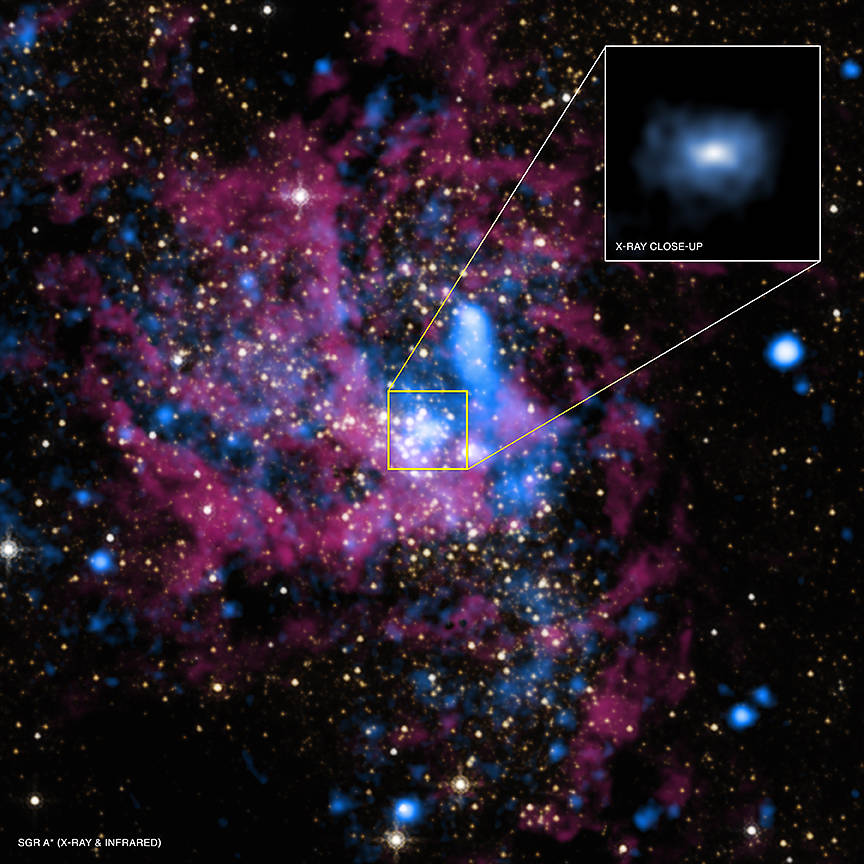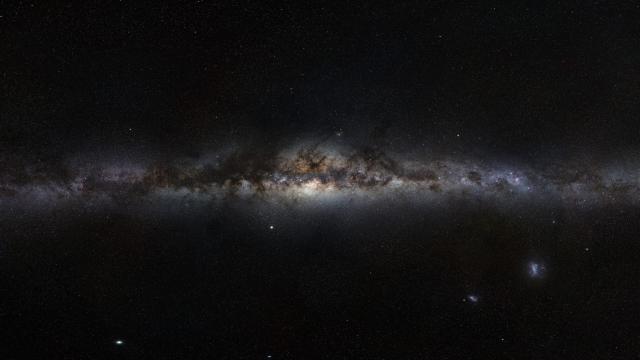In May 2019, astronomers witnessed a bright flare coming from the centre of our galaxy. The event was caused by matter accreting to our local black hole, a 4.6-million-solar-mass monster named Sagittarius A*. The cause of the flaring was unknown, though one researcher now says enigmatic “G-objects” may be responsible.
Stars and other cosmic objects pass by Sagittarius A* (pronouncing sag-A-star) all the time, but whatever got too close a few years ago “sent the black hole into this weird state where it kept producing something extraordinary,” said study author Lena Murchikova, an astrophysicist at the Institute for Advanced Study, in a phone call. “We haven’t seen any sort of activity like this ever, since the beginning of observation, which was about 25 years ago.”
During 2019’s recorded flare event, the core of the Milky Way flashed twice as brightly in near-infrared light as any previously recorded burst, and 100 times brighter than the normal brightness of its centre. This lasted for two and a half hours, as matter fell into the central void, lighting up the readings of Hawaii’s Keck Observatory. Additional flares continued until at least the end of that year.

Previously, researchers suggested the flares may have been caused by a particular kind of star whose orbit swings precipitously close to the black hole, which pulls matter off it with its intense gravity. Murchikova determined that the timing didn’t line up — the star passed by the black hole nearly a year before the flare, and its matter would have taken longer than that year to reach the accretion disk. An alternative was two so-called G-objects, the identities of which remain unknown but may be either gas clouds, stars, or a bit of both. The G-objects passed at different times, but their matter would’ve arrived at the black hole’s maw at the same time. Murchikova concludes the flare was caused by the joint infall of the G-objects’ masses. Her research is published in The Astrophysical Journal Letters.
“There’s nothing to prove [the timing] is not a coincidence, because we can’t go back in time and calculate it,” Murchikova said. “But it’s the best we have; it seems to be matching, and that’s really weird, obviously.”
If the flaring was indeed caused by these G-objects, it’ll soon pass, an interesting anomaly in the brightness at our galaxy’s core. If the flares were perpetrated by any other celestial culprit, perhaps more events will occur — we’ll just have to wait for more data from our observatories.
